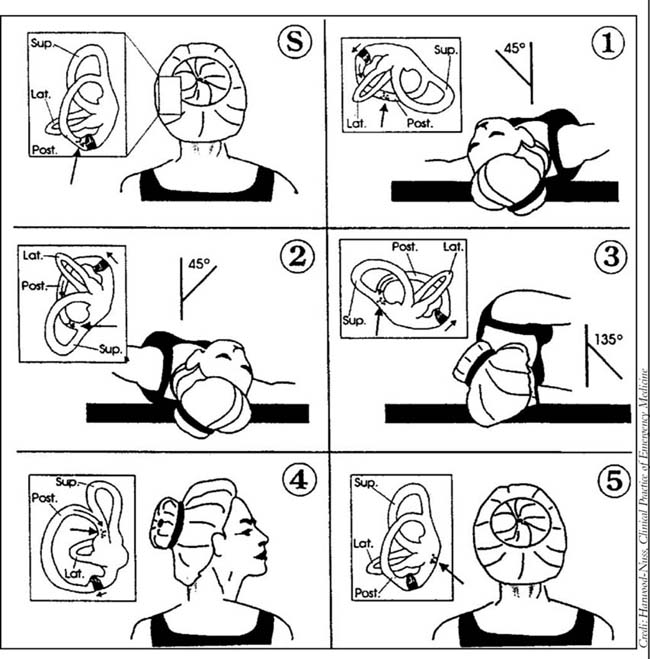However, it is probably one of the most important clinical exams that should be included in the evaluation of every patient with complaints of vertigo. Far and away, the most common cause of vertigo is BPPV. If you don’t look for it, you won’t find it.
Explore This Issue
April 2006Types of Vestibular Function Tests
Tests that can be performed in the general otolaryngology clinic
- Tullio response test
- Pressure response test
- Dix-Halpike maneuver
- Head impulse test
- Head shake test
- Dynamic visual acuity test
- Electronystagmography (ENG)
- Videonystagmography (VNG)
- Fresnel lens test
- Gait test
- Step test
- Caloric test
Tests that are typically performed in referral clinics
- Rotary chair test
- Epley Omniax chair
- Posturography
- Vestibular evoked myogenic potential (VEMP)
- Subjective visual vertical test (SVVT)
Other Office-Based Tests
Several other tests involve technique but not technology, Dr. Soileau said. These include the gait test and the step test. The gait test involves the patient standing initially with feet together and eyes closed. The clinician then observes the patient walking down the hall and making turns to see whether the patient is more coordinated when turning to the right or left.
With the step test, the patient walks in place with eyes closed and the clinician watches to see whether there is any drift to one side or the other, which would indicate a unilateral reduction of vestibular function.
The caloric test, which involves putting hot and cold fluid sequentially in each ear, helps the clinician to localize the ear that is implicated in the patient’s balance problems. It only tests the lateral canal, Dr. Goebel said. When highly positive, with very different results for one ear versus the other, it’s very useful. A colder stimulus should be used if the change is the same on each side with cold water. If the study is with cold water, the patient should be referred for a rotary chair test.

Limitations
Dr. Goebel noted that conventional vestibular tests miss two types of dizzy people. Those include migraine-related dizziness, who have normal test results but whose dizziness is triggered by photophobia, and those whose dizziness is triggered by loud sounds. However, with astute testing, these diagnoses can be teased out, he said.
Leave a Reply